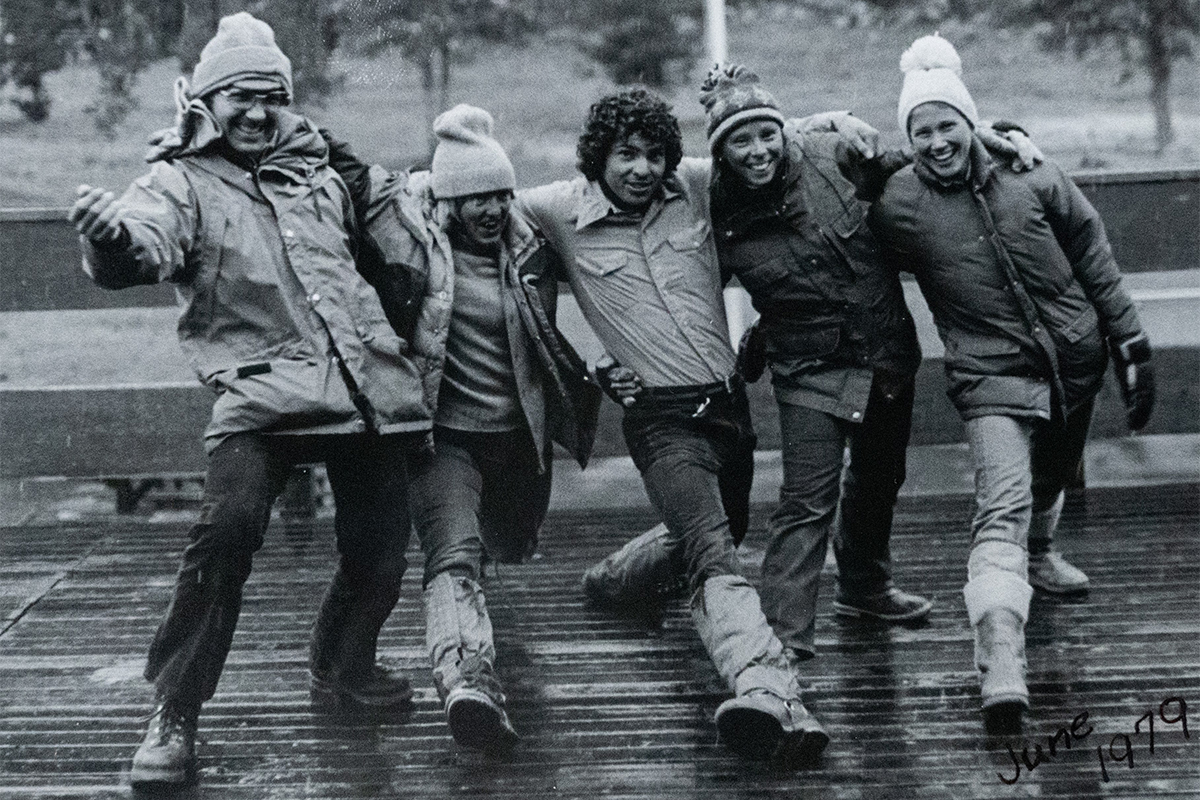1976-1981: Growth and Early Years
The period between 1976 and 1981 marked a period of significant growth and development for Keystone Science School. With a vision to provide transformative outdoor experiences for youth, the dedicated staff poured hundreds of hours into making the cabins livable, transforming the campus into a welcoming and functional learning environment. Their tireless efforts laid the groundwork for the school’s expansion, with a projected enrollment of 3,500 students from 13 states within the first five years. This ambitious goal reflected the school’s commitment to reaching students far and wide, offering them the opportunity to immerse themselves in hands-on learning experiences amidst the stunning backdrop of the Rocky Mountains. Through innovative programming and a focus on environmental education, Keystone Science School quickly became a beacon of learning and discovery, inspiring countless students to explore, learn, and grow.
Cabins on Campus
The cabins at Keystone Science School hold a rich history that reflects the school’s evolution over time. Many of these cabins were not originally located on the campus but were moved to their current location to avoid destruction. Some cabins even date back to the old town of Dillon before it was relocated due to the rising reservoir waters. These cabins have been meticulously preserved, not only for their historical significance but also for their practical use in housing staff. Each cabin tells a story of the past, providing a glimpse into the school’s heritage and the generations of students and educators who have passed through their doors. From the sawmill operations of the early 20th century to the modern-day hub of outdoor education, the cabins at Keystone Science School are a testament to the school’s enduring legacy and commitment to environmental stewardship. Read this blog to learn the history of some of our historic cabins.
1980 – Rives Dining Hall Constructed
In 1980, Rives Dining Hall was constructed. Prior to its construction, all cooking was done in Marmot Cabin, marking a pivotal moment in the school’s history. Rives Dining Hall stands as a testament to the enduring legacy of Robert “Mac” Rives, a visionary leader whose impact on Keystone Science School was profound and lasting. Serving as Executive Director from 1979 through 1982, Rives played a pivotal role in shaping the school’s early years, helping to define its purpose and expand its potential. Tragically, his life was cut short but his spirit lives on in the heart of the school and in the naming of the dining hall in his honor. Rives Dining Hall, dedicated in his memory, serves as a gathering place for students and staff, embodying Rives’ vision of community and collaboration. It is a place where friendships are forged, ideas are shared, and memories are made, reflecting the warmth and generosity of spirit that defined Rives’ leadership. As Keystone Science School continues to grow and thrive, Rives’ legacy remains a guiding light, inspiring all who pass through its doors to embrace the spirit of adventure and discovery that he so passionately championed.
1989 – Bighorn And Henry Dorms Constructed
In 1989, Keystone Science School witnessed a milestone moment with the construction of two on-campus dormitories: Henry and Bighorn. These new facilities provided much-needed accommodations for students and staff, marking a significant expansion of the school’s capacity to serve its growing community. With modern amenities and comfortable living spaces, these dormitories enhanced the overall experience for students participating in the school’s immersive educational programs.
1995 – Land Exchange
In 1995, Keystone Science School underwent a transformative change with a significant land exchange. As part of this exchange, the school traded half of its 40-acre campus to Keystone Resort. This strategic move allowed Keystone Science School to optimize its resources and focus on its core mission of providing outdoor education experiences while also ensuring the preservation of its natural surroundings. With this exchange, the KSS campus now spans 23 acres, providing ample space for immersive learning experiences amidst the breathtaking scenery of the Rocky Mountains.























